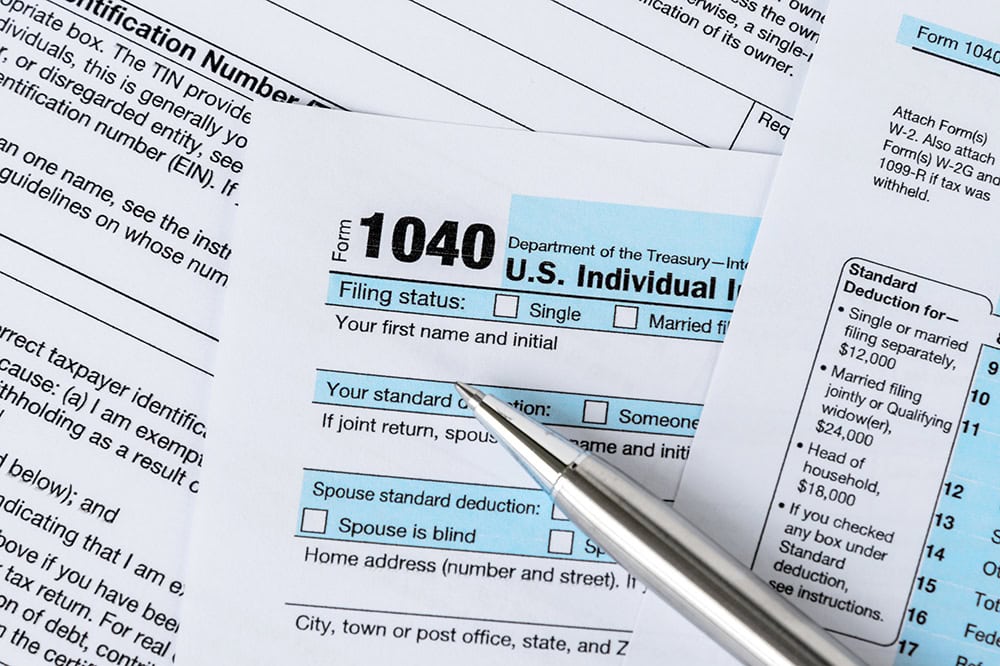As Presidential Debates Begin, Voters Want Leaders to Prioritize National Debt
U.S. Fiscal Confidence is 40 in June (100 is neutral)
As President Biden and former President Trump meet on stage tonight for the first presidential debate, American voters are calling on their leaders to prioritize addressing the national debt and outline their plans to put the nation on a stronger fiscal and economic path. The Peter G. Peterson Foundation’s Fiscal Confidence Index, modeled after the Consumer Confidence Index, is 40 in June (100 is neutral) reflecting deep concern about America’s unsustainable federal budget outlook.
New analysis from the Congressional Budget Office (CBO) shows that the national debt is expected to reach its all-time high in just three years, exceeding the previous record set just after World War II. CBO also reports that interest costs are growing rapidly, rising from $352 billion in 2021 to $892 billion in 2024 to a projected $1.7 trillion in 2034, more than quadrupling in just 13 years.
A 13-month high of 71% of voters nationwide across party lines agree that America is on the wrong track when it comes to the national debt, and 83% urge the president and Congress to spend more time addressing this fundamental issue. More than three-in-four voters (76%) agree the debt should be a top-three priority for the president and Congress, including 68% of Democrats, 73% of independents and 85% of Republicans.
“Voters are deeply concerned about the rising national debt, and tonight’s presidential debate is an important opportunity for the candidates to talk about their plans to stabilize our future,” said Michael A. Peterson, CEO of the nonpartisan Peterson Foundation. “With the debt soon to reach its all-time high, and a series of highly consequential budget deadlines next year, this is a fiscal election. Now is the time for candidates at all levels to put forward their ideas for getting our debt under control and putting the nation on a stronger, more sustainable path.”
Additional recent Peterson Foundation polling shows that more than 90% of voters, across party lines, are seeking candidates committed to addressing the debt, avoiding automatic cuts to Social Security and Medicare, and responsibly reforming the tax code.
The Fiscal Confidence Index measures public opinion about the national debt by asking six questions in three key areas:
- CONCERN: Level of concern and views about the direction of the national debt.
- PRIORITY: How high a priority addressing the debt should be for elected leaders.
- EXPECTATIONS: Expectations about whether the debt situation will get better or worse in the next few years.
The survey results from these three areas are weighted equally and averaged to produce the Fiscal Confidence Index value. The Fiscal Confidence Index, like the Consumer Confidence Index, is indexed on a scale of 0 to 200, with a neutral midpoint of 100. A reading above 100 indicates positive sentiment. A reading below 100 indicates negative sentiment.
Fiscal Confidence Index Key Data Points:
- The June 2024 Fiscal Confidence Index value is 40. (The May value was 36. The April value was 40.)
- The current Fiscal Confidence Index score for CONCERN about the debt is 31, indicating deep concern about the debt. The score for debt as a PRIORITY that leaders must address is 25, indicating that Americans want elected leaders to make addressing long-term debt a high priority. The score for EXPECTATIONS about progress on the debt is 64. The Fiscal Confidence Index is the average of these three sub-category scores.
- For a description of the complete methodology, see the Appendix below.
The Peter G. Peterson Foundation commissioned this poll by the Global Strategy Group and North Star Opinion Research to survey public opinion on the national debt. The online poll surveyed 1,012 registered voters nationwide between June 17 and 18. It has a margin of error of +/- 3.1%.
Detailed poll results can be found online at: www.pgpf.org/FiscalConfidenceIndex.
About the Peter G. Peterson Foundation
The Peter G. Peterson Foundation is a nonprofit, nonpartisan organization that is dedicated to increasing public awareness of the nature and urgency of key fiscal challenges threatening America’s future, and to accelerating action on them. To address these challenges successfully, we work to bring Americans together to find and implement sensible, long-term solutions that transcend age, party lines and ideological divides in order to achieve real results. To learn more, please visit www.pgpf.org.
APPENDIX: Fiscal Confidence Index Methodology and Questions
- The Fiscal Confidence Index is released monthly by the Peter G. Peterson Foundation.
- The Fiscal Confidence Index value is based on six questions in three categories.
- As is done with the Consumer Confidence Index, the first step in calculating the Fiscal Confidence Index is determining the “Relative Value” for each question. This calculation is made by taking the positive response for each question and dividing it by the sum of the positive and negative responses. Each question was asked on a four-point scale, and answers were weighted according to intensity, with the strongest responses counting twice as much as the middle responses (“much” better or worse answers count twice as heavily as “somewhat” better or worse answers).
- The scores for the Concern, Priority, and Expectations categories are determined by averaging the scores derived from the two questions in each category.
- The Fiscal Confidence Index value is converted from the Relative Value to place it on a scale on which 100 indicates equal positive and negative sentiment, while values below 100 indicate negative sentiment and values above 100 indicate positive sentiment.
- The questions are as follows:
| CONCERN (31) | |||
|---|---|---|---|
| Thinking about our national debt over the last few years, would you say your level of concern has increased or decreased? ◊ Is that a lot or just a little? |
June 2024 | May 2024 | April 2024 |
| Increased a lot | 49% | 52% | 50% |
| Increased a little | 29% | 30% | 30% |
| Decreased a little | 6% | 3% | 5% |
| Decreased a lot | 3% | 2% | 3% |
| (No change) | 10% | 9% | 8% |
| (Don’t Know/Refused) | 3% | 3% | 4% |
| INCREASED (NET) | 78% | 82% | 80% |
| DECREASED (NET) | 9% | 5% | 8% |
| When it comes to addressing our national debt, would you say things in the United States are heading in the right direction or do you think things are off on the wrong track? ◊ Do you feel that way strongly or just somewhat? |
June 2024 | May 2024 | April 2024 |
| Right direction — Strongly | 7% | 7% | 9% |
| Right direction — Somewhat | 19% | 19% | 19% |
| Wrong track — Somewhat | 27% | 25% | 26% |
| Wrong track — Strongly | 43% | 45% | 42% |
| (Neither/Mixed) | 1% | 1% | 1% |
| (Don’t Know/Refused) | 3% | 3% | 3% |
| RIGHT DIRECTION (NET) | 26% | 26% | 28% |
| WRONG TRACK (NET) | 71% | 70% | 68% |
| PRIORITY (25) | |||
|---|---|---|---|
| Some people say that addressing the national debt should be among the president and Congress’ top 3 priorities. Do you agree or disagree? ◊ Do you feel that way strongly or just somewhat? |
June 2024 | May 2024 | April 2024 |
| Strongly agree | 51% | 54% | 53% |
| Somewhat agree | 25% | 24% | 24% |
| Somewhat disagree | 14% | 15% | 15% |
| Strongly disagree | 5% | 4% | 3% |
| (Don’t Know/Refused) | 5% | 4% | 5% |
| AGREE (NET) | 76% | 77% | 77% |
| DISAGREE (NET) | 19% | 19% | 18% |
| And when it comes to our national debt, do you think it is an issue that the president and Congress should spend more time addressing or less time addressing? ◊ Would you say a lot (more or less) time or just a little? |
June 2024 | May 2024 | April 2024 |
| A lot more time | 54% | 54% | 52% |
| A little more time | 29% | 30% | 31% |
| A little less time | 6% | 5% | 5% |
| A lot less time | 4% | 4% | 4% |
| (The same amount of time) | 2% | 3% | 3% |
| (Don’t Know/Refused) | 5% | 4% | 4% |
| MORE TIME (NET) | 83% | 84% | 84% |
| LESS TIME (NET) | 10% | 9% | 9% |
| EXPECTATIONS (64) | |||
|---|---|---|---|
| And thinking about our national debt over the next few years, do you expect the problem to get better or worse? ◊ Is that much (better or worse) or just somewhat (better or worse)? |
June 2024 | May 2024 | April 2024 |
| Much better | 7% | 6% | 8% |
| Somewhat better | 21% | 19% | 20% |
| Somewhat worse | 31% | 32% | 30% |
| Much worse | 34% | 35% | 35% |
| (No change) | 2% | 3% | 2% |
| (Don’t know/Refused) | 5% | 5% | 5% |
| BETTER (NET) | 28% | 25% | 28% |
| WORSE (NET) | 65% | 67% | 65% |
| And when it comes to our national debt, are you optimistic or pessimistic that the United States will be able to make progress on our national debt over the next few years? ◊ Would you say you are very (optimistic or pessimistic) or just somewhat? |
June 2024 | May 2024 | April 2024 |
| Very optimistic | 7% | 4% | 8% |
| Somewhat optimistic | 32% | 34% | 31% |
| Somewhat pessimistic | 36% | 37% | 34% |
| Very pessimistic | 20% | 19% | 22% |
| (Neither/Mixed) | 1% | 2% | 2% |
| (Don’t Know/Refused) | 4% | 4% | 3% |
| OPTIMISTIC (NET) | 39% | 38% | 39% |
| PESSIMISTIC (NET) | 56% | 56% | 55% |
Further Reading
Budget Basics: What Is the Child Tax Credit?
The CTC provides assistance to families with children, and while it represents a relatively modest part of overall government spending, it is one of the largest tax expenditures.
Budget Basics: Tax Expenditures
Tax expenditures can come in the form of exclusions, exemptions, deductions, and credits.
What Are the Economic Costs of Child Poverty?
Child poverty is higher in the United States than in other wealthy countries. Studies show that it has quantifiable economic costs.


